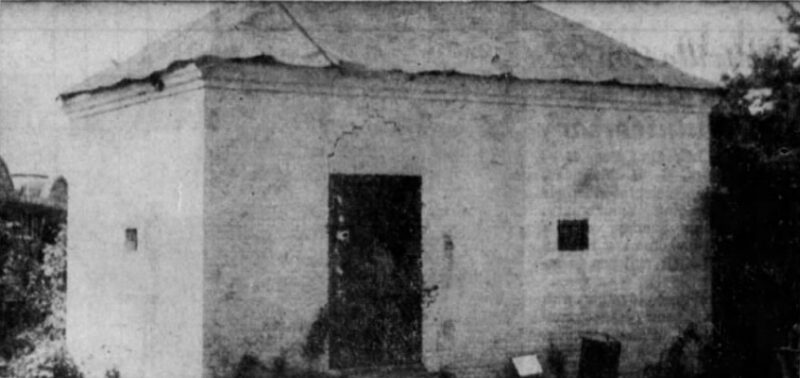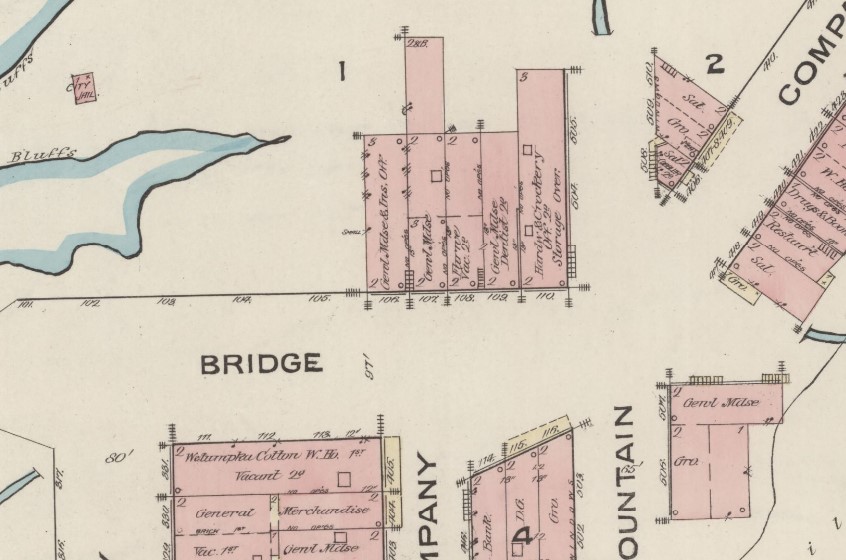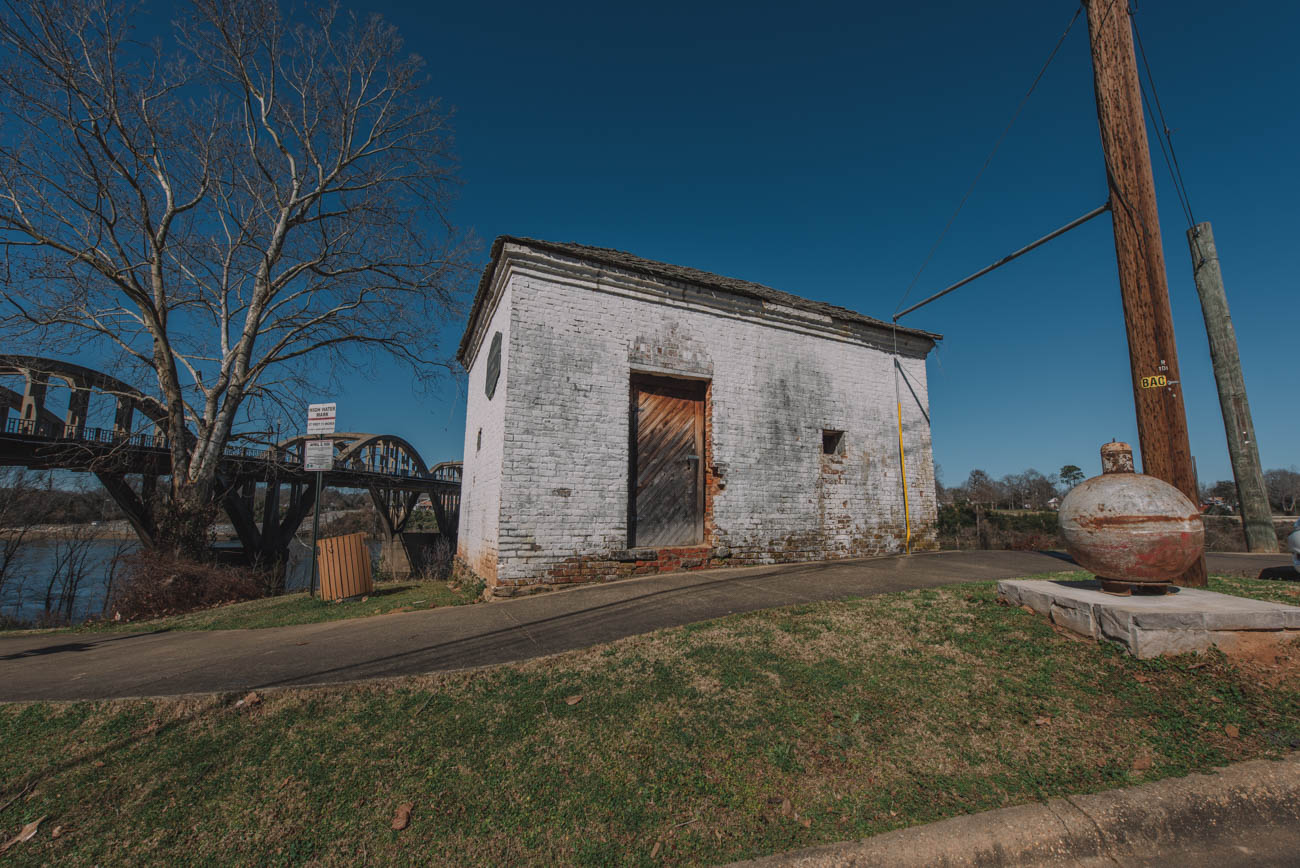| City/Town: • Wetumpka |
| Location Class: • Community |
| Built: • c. 1820 | Abandoned: • N/A |
| Historic Designation: • Historic District (1992) |
| Status: • Restored |
| Photojournalist: • David Bulit |
Table of Contents
History of Wetumpka
The Old Calaboose is located on Orline Street in Wetumpka, along the Coosa River, in a parking area behind the buildings along Bridge Street. It’s estimated to have been built circa 1820, making it one of the oldest surviving structures in Wetumpka. The estimation of the building’s construction puts it shortly after the Alabama Territory joined the Union in 1819.
The city of Wetumpka was formally incorporated in 1834. The new city was divided in half. The part on the eastern bank of the river was commercial, with banks, stores, and hotels, and the western section was residential, with houses and churches laid out on a grid pattern of streets. Wetumpka became a boom town with the thriving cotton industry at the time with a population of 1,200 by 1836. New York-based Harper’s Weekly asserted that “Wetumpka, Alabama and Chicago, Illinois are the most promising two cities of the West.” In 1839, Wetumpka became the site of the State Penitentiary.
1845 Commercial District Fire
When wealthy cotton planters and mercantile businessmen pushed to have the State Capitol moved to a more centralized location, it was proposed that Wetumpka be the new state capital. On the morning of January 29, 1845, a fire broke out at the store of J. S. Oliver which quickly spread to the rest of the commercial district. Entire blocks of businesses and warehouses were razed. Forty-two buildings were destroyed with an estimated $200,000 in damages. Few buildings survived that morning, one being the Farmer’s Alliance Warehouse which now houses the Elmore County Museum, and the other being the old jail. The city of Montgomery was able to sway the opinions of state representatives and was chosen as Alabama’s capital city instead.
During this period, the calaboose is mentioned in the April 5, 1849 edition of the Daily State Guard. It reads: To the Calaboose in this city, on Tuesday the 3rd of April 1849, a Negro boy, who says his name is Bartlett, and that he belongs to Thomas Sullivan of Talladega County, Ala., and was hired to John T. Morgan, Esq. of Talladega. He is about 5 feet and 9 inches high, of dark complexion, and says he is 21 years old. The owner is requested to come forward pay charges and take him away, or he will be dealt with according to law.
R. L. Logan, Marshall.
Wetumpka, April 4, 1849

1852 Fire
Although the city was quickly rebuilt, the commercial district was destroyed again on June 12, 1852, by a large fire presumably set by arsonists. It was reported that damages totaled $300,000, much of which was not insured. The city council enacted an ordinance that prohibited any kind of structure from being constructed in the burnt district unless they were being built of brick. A newspaper wrote that “Col. Winter proposes to furnish any brick at $5 per thousand, $2 on each thousand taken in St. Mary’s money.” It goes on, “…it is believed that during the present summer nearly every house burned will be replaced by a good and substantial brick building, and that Wetumpka in the course of next year, will be a second Pheonix.“
Civil War
Despite these setbacks, Wetumpka was still growing and prospering having been the third-largest city in the state with a population of 3,800 behind Mobile and Montgomery. The Civil War, however, would lead to the city’s decline. Men were sent off to war, and those that survived returned to no money or valuables, and no resources other than the soil itself. The only fortunate outcome was that the buildings were not burned by Union troops as they had done throughout much of the state.
In 1866, a Reconstruction government drew up a new plan of counties for the state, and Elmore County was created out of parts of Coosa, Autauga, and Montgomery counties, with Wetumpka as its county seat. Despite this, the city’s future looked grim. By 1900, the population had dropped to 562. It wouldn’t be until 1950 that it would return to the population it had 100 years earlier.
Resurgence
The first paved road between Wetumpka and Montgomery was completed in 1924. Montgomery steadily grew during the two World Wars because of the military spending in the region and Wetumpka slowly progressed alongside it. The pervasiveness of the automobile following World War II allowed residents to commute between the two cities and increased real estate development in the outlying communities.
On February 20, 1992, the old calaboose was added to the National Register of Historic Places on February 20, 1992, as a contributing structure to the East Wetumpka Commercial Historic District. The NRHP describes it as such: “Traditionally regarded as Wetumpka’s first jail. One story rectangular brick structure on fieldstone foundation. Hipped roof, small barred windows on three sides, and heavy wooden entrance door on eastern elevation.” The buildings in the district date back between 1820 and 1931, and exemplify the growth the city has gone through these past two centuries.

Photo Gallery
References
Republican Banner. (February 12, 1845). DISASTROUS CONFLAGRATION AT WETUMPKA—GREAT DESTRUCTION OF PROPERTY.
Southern Press. (June 30, 1852). “The late fire at Wetumpka destroyed houses and property…“
The Montgomery Advertiser, Mary Jo Poe. (December 29, 1957). Wetumpka History Relates Colorful Past





